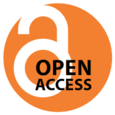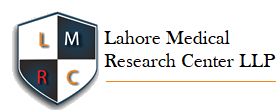Assess The Effect of Workload On Patient Safety and Quality of Care
Workload on Patient Safety and Quality of Care
DOI:
https://doi.org/10.54393/nrs.v1i01.5Keywords:
Nursing Workload, Patient Safety, Quality of CareAbstract
The workload remained one of the major problems in the health care system. All Health professionals dealing with this issue of increased workload such as doctors, nurses, Paramedic’s etc. Objective: To assess the effect of workload on patient safety and quality of care in the medical and surgical units of Jinnah Hospital, Lahore. Methods: A descriptive cross sectional research study design was conducted among 178 patients at Jinnah Hospital, Lahore. The convenient sampling technique was used. The population that is targeted was patients of Jinnah Hospital, Lahore. Results: The general finding of the study demonstrated that workload affect the patient safety and quality of care. The descriptive statistics applied, frequency and mean checked, formed for quality, cronbach alpha, bartlett's, KMO and kolmogorov-smirnov test values have been checked to insure the validity and reliability and data normality in our context. The values showed positive and significant results and tools were consider as reliable and valid for performing statistical analysis. Conclusions: The study concluded that nurse to patient ratio is not appropriate. And this inappropriate nurse to patient ratio cause lack of patient safety and decrease quality care. In addition to patient condition and staffing numbers, the structure of the nursing work system also has an impact on nursing workload. The outcomes demonstrated a significant relation between nursing workload and patient safety.
References
de Campos CE, Feldman LB, D’Innocenzo M. Uso de la estructura conceptual de la clasificación internacional sobre seguridad del paciente en los procesos ético-disciplinarios en enfermería. Enfermería Global. 2017 Dec; 16(48): 151-84. doi: 10.6018/eglobal.16.4.250761
Aiken LH, Cerón C, Simonetti M, Lake ET, Galiano A, Garbarini A, et al. Hospital nurse staffing and patient outcomes. Revista Médica Clínica Las Condes. 2018 May; 29(3): 322-7. doi: 10.1016/j.rmclc.2018.04.011
Lancis-Sepúlveda ML and Asenjo-Araya C. Estudio de incidencia de eventos adversos en una clínica privada en Chile. Revista de Calidad Asistencial. 2014 Mar; 29(2): 78-83. doi: /10.1016/j.cali.2013.10.003
Derscheid DJ. Implementation of a Preparedness Program to Address Violent Situations in Healthcare. Nursing Leadership. 2020; 33(3): 45-54.
Almenyan AA, Albuduh A, Al-Abbas F. Effect of nursing workload in intensive care units. Cureus. 2021 Jan; 13(1): e12674. doi: 10.7759/cureus.12674
Browne J and Braden CJ. Nursing turbulence in critical care: Relationships with nursing workload and patient safety. American Journal of Critical Care. 2020 May; 29(3): 182-91. doi: 10.4037/ajcc2020180
Magalhães AM, Costa DG, Riboldi CD, Mergen T, Barbosa AD, Moura GM. Association between workload of the nursing staff and patient safety outcomes. Revista da Escola de Enfermagem da USP. 2017 Dec; 51: e03255. doi: 10.1590/s1980-220x2016021203255
Driscoll A, Grant MJ, Carroll D, Dalton S, Deaton C, Jones I, et al. The effect of nurse-to-patient ratios on nurse-sensitive patient outcomes in acute specialist units: a systematic review and meta-analysis. European Journal of Cardiovascular Nursing. 2018 Jan; 17(1): 6-22. doi: 10.1177/1474515117721561
Fischer D, Schlößer RL, Kempf VA, Wichelhaus TA, Klingebiel T, Philippi S, et al. Overcrowding in a neonatal intermediate care unit: impact on the incidence of multidrug-resistant gram-negative organisms. BMC Infectious Diseases. 2019 Dec; 19(1): 1-8. doi: 10.1186/s12879-019-3981-8
Ghanbary Sartang A, Ashnagar M, Habibi E, Sadeghi S. Evaluation of Rating Scale Mental Effort (RSME) effectiveness for mental workload assessment in nurses. Journal of Occupational Health and Epidemiology. 2016 Oct; 5(4): 211-7. doi: 10.18869/acadpub.johe.5.4.211
Neuraz A, Guérin C, Payet C, Polazzi S, Aubrun F, Dailler F, et al. Patient mortality is associated with staff resources and workload in the ICU: a multicenter observational study. Critical Care Medicine. 2015 Aug; 43(8): 1587-94. doi: 10.1097/CCM.0000000000001015
Alsharari AF, Abuadas FH, Hakami MN, Darraj AA, Hakami MW. Impact of night shift rotations on nursing performance and patient safety: A cross‐sectional study. Nursing Open. 2021 May; 8(3): 1479-88. doi: 10.1002/nop2.766
Needleman J, Liu J, Shang J, Larson EL, Stone PW. Association of registered nurse and nursing support staffing with inpatient hospital mortality. BMJ Quality & Safety. 2020 Jan; 29(1): 10-8. doi: 10.1136/bmjqs-2018-009219
Canada. Parlement. Chambre des communes. Comité permanent de la santé, Casey B. Violence facing health care workers in Canada: Report of the Standing Committee on Health. House of Commons Canada= Chambre des communes Canada; 2019.
Chang LY and Hsiu-Hui YU. The relationship between nursing workload, quality of care, and nursing payment in intensive care units. The Journal of Nursing Research. 2019 Feb; 27(1): 1-9. doi: 10.1097/jnr.0000000000000265
Anton N, Hornbeck T, Modlin S, Haque MM, Crites M, Yu D. Identifying factors that nurses consider in the decision-making process related to patient care during the COVID-19 pandemic. Plos One. 2021 Jul; 16(7): e0254077. doi: 10.1371/journal.pone.0254077
Harrington C, Dellefield ME, Halifax E, Fleming ML, Bakerjian D. Appropriate nurse staffing levels for US nursing homes. Health Services Insights. 2020 Jun; 13: 1178632920934785. doi: 10.1177/1178632920934785
Johnson-Howell JJ and Derscheid DJ. Implementation of a Preparedness Program to Address Violent Situations in Healthcare. Nursing Leadership. 2020; 33(3): 45-54.
Astik GJ, Kulkarni N, Cyrus RM, Yeh C, O’Leary KJ. Implementation of a triage nurse role and the effect on hospitalist workload. Hospital Practice. 2021 Oct; 49(5): 336-40. doi: 10.1080/21548331.2021.1949169
Jung M, Park H, Kang D, Park E, Jeon K, Chung CR, et al. The effect of bed-to-nurse ratio on hospital mortality of critically ill children on mechanical ventilation: a nationwide population-based study. Annals of Intensive Care. 2020 Dec; 10(1): 1-8. doi: 10.12927/cjnl.2020.26320
Manzoor F, Wei L, Hussain A, Asif M, Shah SI. Patient satisfaction with health care services; an application of physician’s behavior as a moderator. International Journal of Environmental Research and Public Health. 2019 Sep; 16(18): 3318. doi: 10.3390/ijerph16183318
Neill D. Nursing workload and the changing health care environment: a review of the literature. Administrative Issues Journal. 2011 Oct; 1(2): 132-142. doi: 10.5929/2011.1.2.11
Downloads
Published
How to Cite
Issue
Section
License
Copyright (c) 2021 NURSEARCHER (Journal of Nursing & Midwifery Sciences)

This work is licensed under a Creative Commons Attribution 4.0 International License.
This is an open-access journal and all the published articles / items are distributed under the terms of the Creative Commons Attribution License, which permits unrestricted use, distribution, and reproduction in any medium, provided the original author and source are credited. For comments editor@nursearcher.com












